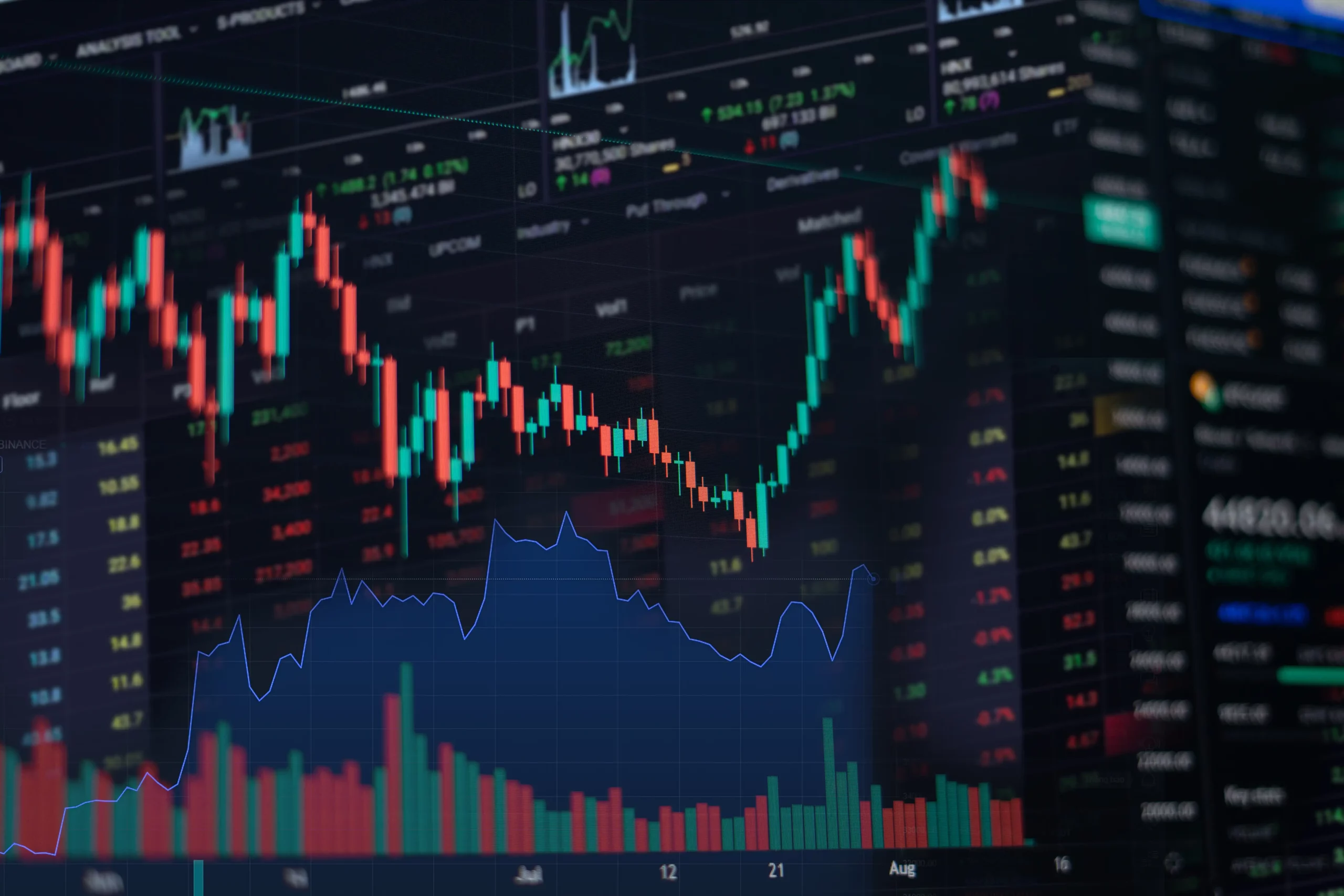Navigating the Opaque but Evolving World of FX Execution
by MillTechFx | [rt_reading_time label=”” postfix=”MIN READ” postfix_singular=”minute”]
Introduction
The foreign exchange (FX) market is the largest and most liquid in the world, with a daily volume of $6.6 trillion. A series of market-moving events in recent years has placed the importance of having a FX strategy firmly back in the spotlight. It would be easy to think that these are one-off events, that geopolitical uncertainty and currency volatility will calm down. But, in fact, FX volatility is a constant.
Despite this significant risk, many private equity firms with currency exposures have given FX policy very little consideration. And those that have might still suffer from a lack of transparency when it comes to fees, as well as from improper infrastructure for best execution.
This paper is designed to highlight the importance of FX to private equity firms, shine a light on the issues they face in achieving best execution and provide them with practical steps to improve their FX processes and reduce their costs.

Why is FX important for private equity firms?
Private equity firms might find themselves exposed to FX risk in four different ways:
Foreign currency assets
The more jurisdictions a PE manager’s strategy allows for, the greater the number of investment opportunities. However, considering annual movements in even G10 currency pairs can be significant, FX rate movements have the potential to completely erode long-term value creation efforts or create complications pre-acquisition and pre-disposal. PE managers commonly implement short-dated hedging to lock in rates during the purchase or sale of an asset, whilst others may even consider hedging asset value throughout the entire hold period.
Management fees
It is not uncommon to see PE managers raise a fund in one currency but have offices outside the jurisdiction of their fund’s base currency. This means the PE manager receives their management fees in one currency but then has to pay for certain fixed costs, such as salaries and offices, in one or potentially multiple different currencies. FX rate movements can place a greater strain on management fee income and for that reason PE managers commonly look to lock in exchange rates on expected fee income for as long as possible.
Investor Capital
As a PE manager matures, it becomes increasingly likely that they may see foreign currency investors commit capital to their funds. Some managers may take the stance of letting their investors manage their own FX risk, whilst others are more accommodative and implement share class hedging. Share class hedging takes FX risk off the table when investors are considering which funds to commit to and, in that way, can be a useful tool for managers to broaden their investor base and make their funds more marketable overseas.
Indirect, portfolio level FX exposure
As a PE manager grows its portfolio, their investment team may have to overhaul how their portfolio businesses manage their FX exposure. In a recent HSBC corporate risk management survey, 57% of CFOs say they suffered lower earnings in the past two years due to significant unhedged FX risk (rising to 77% in EMEA). On the subject of FX risk management, the HSBC report cites that only 23% of CFOs view their treasury as “best in class” in this area. A PE firm may look to align their own set-up and processes with those of their underlying portfolio and hold them to the same high governance standards.
FX risk management considerations
With economic changes, such as further interest rate rises on the horizon, we believe private equity firms should prioritise FX risk management to improve performance, deliver sustainable growth and, ultimately, protect their returns.
But before committing to a particular hedging strategy, a fund manager might want to consider questions like:
- What percentage of my AUM is in foreign currencies?.
- Can I forecast my requirement? (Hedging AUM in PE can be like hitting a moving target when considering how much to hedge)
- What is the portfolio’s sensitivity to a movement in the currency pairs I’m exposed to?
- Do investors want exposure to the managers chosen investment jurisdictions?
- Will the next fund vehicle be marketed to investors in new jurisdictions?
- Are my portfolio businesses manging FX risk effectively?
- How much of a buffer is there between management fee income and annual expenses?

What is best execution?
Ultimately a PE manager may decide to implement a hedging strategy or to leave themselves open to market fluctuations and book in the spot market. Either way, as a fiduciary firm, there is one thing that fund managers must adhere to, and that is Best Execution.
- Price and cost
- Speed and likelihood of execution and settlement
- Size and other factors directly related to the execution of the order
Often price or cost will be considered the highest priority, although for these to be the primary focus, there needs to be an operational robustness in all other components, such as settlement and speed.
Furthermore, considering the foreign exchange market is the largest and most liquid financial market in the world, it would be a fair assumption that transparency and best execution would come as standard, however, we believe this is not the case and some fund managers are still catching up.
How it’s regulated and why it matters
Best execution is covered by various market principles and regulation originating from the FCA Conducts of Business Sourcebook and Principles of Business, the FX Global Code of Conduct and, most notably, MiFID II.
Combined, they stipulate that investment firms should:
- Treat customers fairly
- Deal with market participants in a consistent and appropriately transparent manner
- Take all ‘sufficient’ steps to obtain the best possible result for the client when executing orders.
However, any fiduciary firm should consider best execution as a core component of best practice and not simply a regulatory obligation to satisfy.
“For us, actively addressing currency exposure converts to better business performance and greater shareholder value.”
PE INSIDER COMMUNITY MEMBER, CFO AT A LARGE MID-MARKET GP
Increasingly, investors are also questioning fund managers around their FX execution policy and requesting ongoing transaction cost analysis. Pursuing best execution has other positive impacts too, notably the reduced transaction costs as a result of increased competition between counterparties.

A history of controversy
Since the 2008 global financial crisis, the FX market has had its fair share of negative press. The forex rate-rigging scandal grabbed the major headlines in 2014 and significant fines were handed down to some of the world’s largest banks. However, in the background, stories relating to a lack of transparency and poor FX execution practices were rife:
- In the US, a series of high-profile lawsuits were filed by pension funds against their custody banks, claiming that the banks had charged excessive fees for FX trades, deriving from a lack of transparency around how, and when, trades were being executed.
- One such lawsuit alleged that for more than a decade the custodian in question had conducted FX transactions in “an unfair and deceptive” way to maximise its profits at the expense of its customers.[i]
- In 2014 the FCA published a press release titled ‘FCA finds firms unable to deliver best execution’. The article looked at 36 firms, finding that many “do not understand key elements of the rules and are not adequately controlling client costs when executing orders.”[ii]
- In 2017, the FCA highlighted that investment managers had not been particularly engaged with assuring best execution for their clients. According to the FCA, some firms had been addressing the issue and are showing “good practice”, however the bulk of the industry is trailing behind.[iii]
With all the controversy and regulatory intervention relating to FX best execution in recent years, fund managers know what is required of them – so, what’s stopping them?
The short answer, in our opinion, is that it’s labour intensive and difficult. Fund managers may need to identify and approach new FX counterparties, form new relationships, put ISDAs in place and set up new trading systems – it can be exhausting! The whole process, from start to finish, could take anything up to a year (in some cases longer) which can be time consuming, especially when FX might not be a core business operation.
The fun doesn’t stop there. Let’s say a fund manager has gone through all the necessary steps and now has a multi-bank panel at their disposal for FX execution. Each counterparty might have different trade processes and systems to navigate – for this reason the fund manager might have to make an additional investment in an aggregator platform to centralise price discovery.
After all that, the fund manager might not see a fully transparent breakdown of FX transaction costs and may need to perform transaction cost analysis (TCA) through an independent TCA provider to evidence best execution – this too can come with its own costs.
Lack of transparency for PE firms
Comparison websites are all the rage and it’s easy to understand why. In a sea of choice for home insurance, holidays and TVS, there is often little to differentiate one from the other. When products and services become highly commoditised, often the deciding factor for the consumer is price or cost. If there isn’t much to differentiate between multiple purchase options in terms of the product or service that’s delivered, why would you pay more?
Unnecessary costs should be avoided (at all costs!) because investors expect that every single pound, euro or dollar generates a return and partners are aiming to surpass their performance hurdle.
Managing FX costs
FX is highly commoditised – a US dollar is a US dollar whichever bank you buy it from – so assuming certain basic delivery and service standards are met, price, or the most competitive exchange rate, wins most of the time.
Fund managers also have a fiduciary responsibility to pursue best execution for their clients so they must have multiple FX counterparties at their disposal every time they enter the market to execute a trade. This means they’ll need to consider the number and quality of FX counterparties competing for trades. When a fund manager implements an FX policy, they should also take into account the following:
- If notional / credit thresholds are of sufficient size
- The credit terms of the facility are in line with their liquidity profile
- If trade tenors match their desired hedging strategy
Many CFOs and COOs can articulate their FX strategy, best performing counterparties and associated credit limits however, few can they say with certainty what their costs are explicitly, and relative to what may have been agreed upfront.
FX costs are usually hidden as an all-in rate which is discounted from the mid. However, it can be hard for fund managers to identify where the mid is and therefore calculate what their costs are on a trade-by-trade basis.
Fund managers are often spoiled for choice when weighing up service providers such as banking partners, subscription line lenders and fund administrators, meaning decisions are often made on fine margins.
Let’s not forget that post the 2008 global financial crisis, a series of high-profile lawsuits were filed by pension funds against their custody banks, claiming that the banks had charged excessive fees for FX trades, deriving from a lack of transparency around when trades were being executed and the mid at that time.
Monitoring FX costs
Fund managers can always check what they’re being charged on FX transactions by conducting regular Transaction Cost Analysis (TCA).
TCA goes hand-in-hand with best execution and can be used as an ongoing audit of FX practices as well as hold existing FX counterparties to account.
One major goal of TCA is to gain oversight of trading costs, but additionally it helps to comply with best execution policy, regulation and strong governance expectations from investors and internal stakeholders.
- Find FX counterparties that can meet your requirements
- Compare pricing on a trade-by-trade basis
- Capture trade data for regular, post-execution cost analysis i.e. TCA
Why might that be?
A lot of the market still use manual processes to compare pricing, execute trades, and reconcile trade information – namely trade timestamps – which are sometimes not reported accurately by their FX counterparties.
For many fund managers, FX is a non-core business activity so they commonly get set up with a handful of FX counterparties, with the hope that increased competition bypasses the need to agree upfront costs and monitor them on an ongoing basis – this simply isn’t the case.
However, it is important to remember that TCA typically comes with its own costs so fund managers could explore selecting an FX partner that has TCA built into their offering. Fund managers should check that any offer of TCA is carried out by an independent provider who can assess trade costs in an unbiased manner.

What do I need for TCA?
STo perform a TCA, historical trade data is required:
- Currency pair
- Nominal trade volumes
- Product (spot, forward etc)
- Trade date and value date of the trade
- Time stamps
- Direction i.e. buy/sell
- Executed rates
To calculate the transaction cost on a trade, the actual rate the trade was executed at is compared to an independent mid-market rate at the time of execution.
What does a TCA show?
- The cost on a trade by trade basis or the total portfolio cost of a dataset
- Cost inconsistencies across product, currency pair, tenor and counterparty
- Evidence of best execution
Ongoing, quarterly TCA analysis can also be embedded to ensure consistent FX execution performance.
Efficient Use of Capital

Operational Efficiency
A fund manager should also consider future-proofing their finance function – in five years’ time, there may have been more than two new funds raised, new strategies, new jurisdictions, new investors, new employees in the team. Archaic processes might be a minor annoyance today but become a severe operational overhead in the future.

The Case for Outsourcing
Research published by the investment consultant Russell Investments “Still Overpaying for FX” analysed 173,000 FX trades conducted on assets totalling approximately $76 billion.
It concluded that for an average $1 billion fund, savings of $330,000 per annum would have been achievable from the adoption of an agency approach where FX trading is outsourced to a third-party specialist. In some cases, funds could have saved much more.
The Russell study explicitly suggested the consideration of a model whereby a third-party specialist agent is appointed to manage FX trades and pursue competition among a panel of counterparties to achieve the best possible price.
Given that no one bank will be able to offer the best price on all currency pairs at all times, there are significant advantages to transacting with a provider that can offer the best price among a “panel” of banks, rather than with one bank on a bilateral (and fundamentally uncompetitive) basis.
The communication is provided in good faith, for illustrative, information and educational purposes only based on information which we believe to be accurate, reliable, or complete. The information within this communication may become subject to changes during the intervening period and MillTechFX does not assume any liability or guarantee for the timeliness, accuracy and completeness of the information provided. The information herein is not intended to provide, and should not be relied upon for, accounting, legal or tax advice or investment recommendations. You should consult your investment, tax, legal accounting or other advisors. This document, including the information provided herein, is provided for information purposes only and does not constitute an invitation or offer to subscribe to or purchase any of the products or services mentioned. It does not take into account the particular investment objectives, financial situation or needs of individual clients. The information contained is intended for Professional Clients/Eligible Contract Participants only. MillTechFX does not target retail clients as the products offered by MillTechFX are not suitable for, or made available to retail clients.

How MillTechFX can help
MillTechFX is an FX-as-a-Service (FXaaS) pioneer that enables fund managers to access multi-bank FX rates via an independent marketplace.
Its end-to-end solution automates the FX workflow and ensures transparent best execution on each and every transaction – saving clients time and costs. It offers a fixed fee service model, including third-party transaction cost analysis to ensure total transparency.
MillTechFX harnesses the purchasing power of Millennium Global, one of the world’s largest currency managers with c. $17.3bn AuM, which transacts over $760bn in annual FX volume*. Via the MillTechFX marketplace, clients can directly access preferential FX rates and credit terms from up to 15 Tier 1 counterparty banks.
MillTechFX has raised $30m from investors since launching in 2019, and clients executed approximately $50bn in FX volume in 2021 on its easy-to-use platform.
Headquartered in London, the world’s largest FX hub, MillTechFX is authorised and regulated by the UK’s Financial Conduct Authority (FCA), registered with the USA’s National Futures Association (NFA) and Canada’s Financial Transactions and Reports Analysis Centre (FINTRAC). Our European subsidiary, MillTechFX (Europe) SAS is authorised as an Investment Firm by The Prudential and Resolution Control Authority (ACPR in France) and authorised and regulated by The Financial Markets Authority (AMF).
